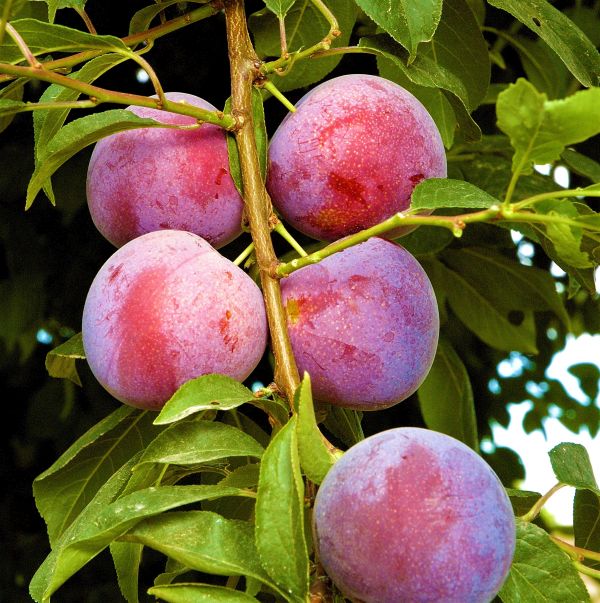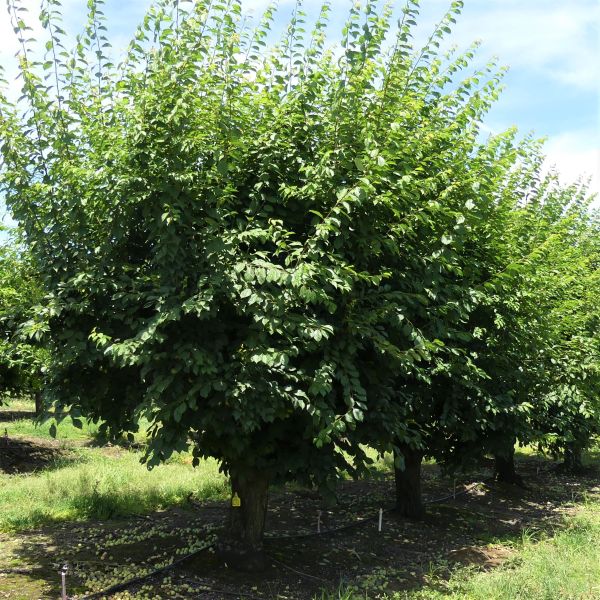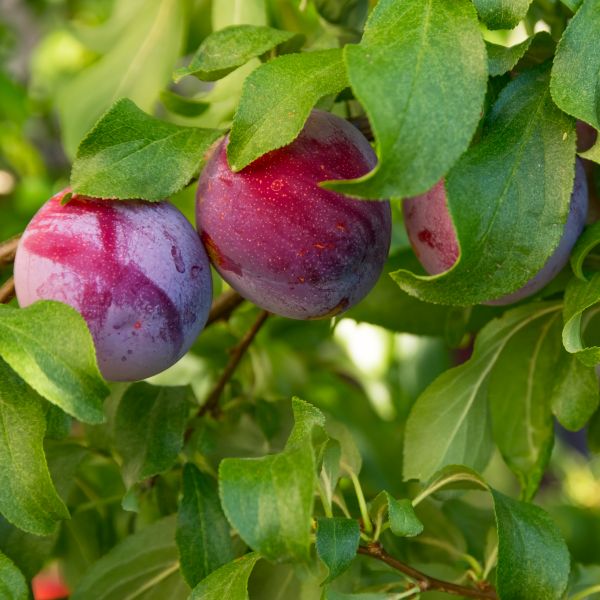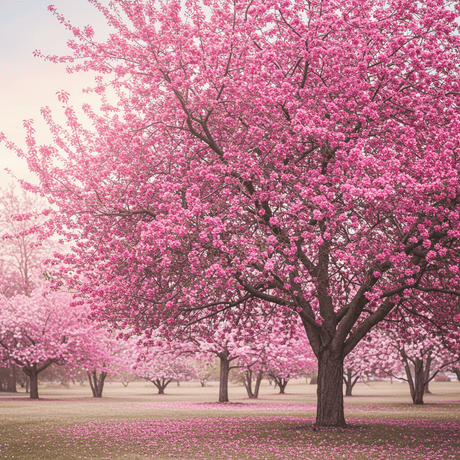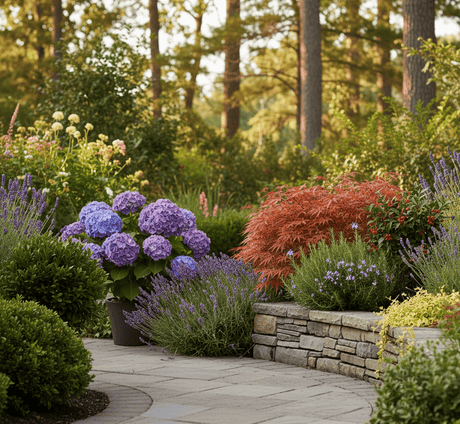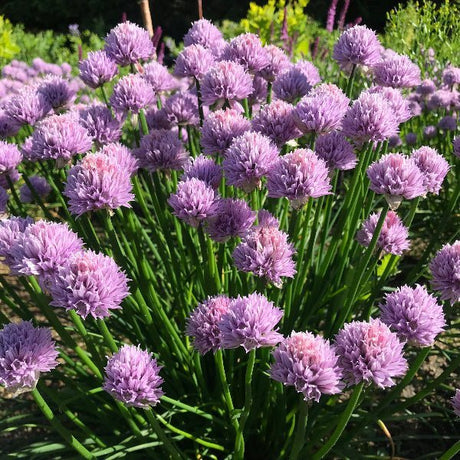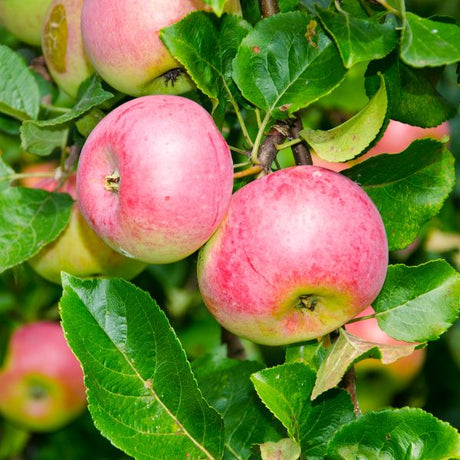Methley Plum Tree
Prunus salicina 'Methley'
Plant Sentry™
Plant Sentry™

Plant Sentry™ Protected
Your order is protected by our compliance system that:
- Prevents restricted plants from shipping to your state
- Ensures plants meet your state's agricultural requirements
- Protects gardens from invasive pests and diseases
Delivery and Shipping
Delivery and Shipping
Delivery and Shipping
Fast, Safe Plant Delivery
Ships in 3-4 business days • Tracking provided • Weather protected
| Under $50 | $9.99 |
| $50 - $99.99 | $14.99 |
| $100 - $149.99 | $16.99 |
| $150 - $198.99 | $24.99 |
| $199+ | FREE |
✓ Zone-specific timing • ✓ Professional packaging • ✓ Health guarantee
Understanding Plant Options
Nature Hills offers plants in two main formats:
- Container Plants: Grown in pots with soil, sized by container volume and plant age
- Bare Root Plants: Dormant plants without soil, sized by height measurements
Container Plant Sizes
Container sizes indicate plant age and growing capacity rather than liquid volume equivalents. Our containers follow industry-standard nursery "trade gallon" specifications, which differ from standard liquid gallon measurements.
Young Plants (6 months to 18 months old)
| Container Size | Actual Volume | Metric Equivalent |
|---|---|---|
| 2" x 2" x 3" | 0.18 - 0.21 dry quarts | 0.20 - 0.23 dry liters |
| 4" Container | 0.31 - 0.87 dry quarts | 0.35 - 0.96 dry liters |
| 4.5" Container | 0.65 dry quarts | 0.72 dry liters |
| 6" Container | 1.4 dry quarts | 1.59 dry liters |
| 1 Quart | 1 dry quart | 1.1 dry liters |
| 5.5" Container | 1.89 dry quarts | 2.08 dry liters |
Established Plants (18 months to 2.5 years old)
| Container Size | Actual Volume | Metric Equivalent |
|---|---|---|
| 2 Quart | 2 dry quarts | 2.2 dry liters |
| #1 Container | 2.26 - 3.73 dry quarts | 2.49 - 4.11 dry liters |
| 5" x 5" x 12" | 3.5 - 4.3 dry quarts | 3.85 - 4.74 dry liters |
Mature Plants (2-4 years old)
| Container Size | Actual Volume | Metric Equivalent |
|---|---|---|
| #2 Container | 1.19 - 1.76 dry gallons | 5.24 - 7.75 dry liters |
| #3 Container | 2.15 - 2.76 dry gallons | 8.14 - 12.16 dry liters |
Large Plants (3-5 years old)
| Container Size | Actual Volume | Metric Equivalent |
|---|---|---|
| #5 Container | 2.92 - 4.62 dry gallons | 12.86 - 20.35 dry liters |
| #6 Container | 5.25 - 6.01 dry gallons | 23.12 - 26.42 dry liters |
| #7 Container | 5.98 - 6.53 dry gallons | 26.34 - 28.76 dry liters |
Bare Root Plants
Bare root plants are sold by height from the root system to the top of the plant. Plants may exceed minimum height requirements.
Common Sizes:
- Trees: 1 foot, 2 feet, 3 feet, 4 feet, 5 feet, 6 feet
- Shrubs & Perennials: 1 foot, 18 inches, 2 feet
Important Notes
Container Volume Specifications
- Trade Gallon Standard: Our containers follow industry-standard "trade gallon" specifications established by the American National Standards Institute (ANSI Z60.1) for nursery stock
- Volume Variations: Actual soil volume may vary due to plant root systems and growing medium settlement
- Age Indicators: Container size primarily indicates plant age and maturity rather than liquid volume equivalents
Growing Conditions
- Plant size can vary based on variety and growing conditions
- Container size helps indicate plant maturity and establishment level
- Larger containers generally mean more established root systems and faster landscape establishment
Seasonal Availability
- Bare root plants are available seasonally when dormant
- Container plants are available throughout the growing season
- Specific varieties may have limited availability in certain sizes
Questions?
For questions about specific plant sizes or availability, please contact our plant experts who can help you choose the right size for your landscape needs.

Plant Sentry™ Protected
Your order is protected by our compliance system that:
- Prevents restricted plants from shipping to your state
- Ensures plants meet your state's agricultural requirements
- Protects gardens from invasive pests and diseases
Plant Profile & Growing Essentials
Cold hardy, Flowering, Edible, Self-pollinating, Ornamental Berries/Fruit, and Attracts pollinators
-
Botanical Name
-
Height
-
Width
-
Growing Zones
-
Sunlight
-
Growth RateModerate
-
Flower Color
-
Leaf Color
-
Pollinator FriendlyYes
-
Pollinator Required
-
Bloom PeriodLate Spring
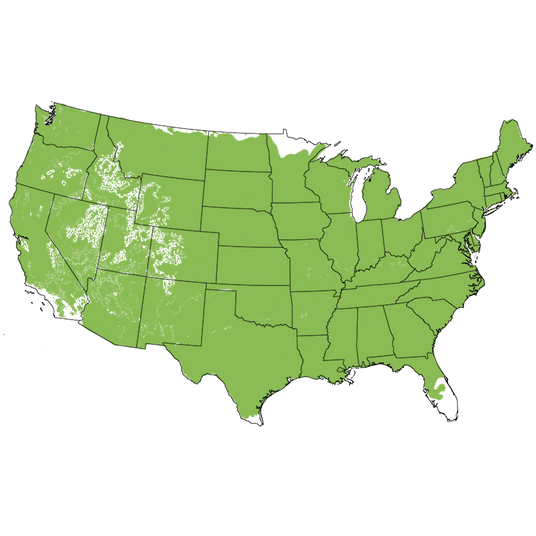
Growing Zones 4-9
Great for Fruit Beginners Methley Plum Tree!
- Gorgeous Reddish-Purple Fruit
- Soft, Sweet, Mild & Juicy Fruit
- Self-Pollinating
- Drifts of White Spring Blooms
- Fragrant & Call Pollinators
- Mid-Season Harvest
- Heavy Bearing & Strong Limbs
- Highly Adaptable
- Heat & Disease Resistant
- Bruce Plum Tree Pollination Partner
- Eating Fresh, Pies, & Preserves
- Low 150-250 Chill Hours
The Methley Plum (Prunus salicina 'Methley') is a fast-growing tree that produces an abundant harvest of sweet, juicy fruit each year! Plant one in full sun where its showy, spring display and abundant harvest won't be overlooked.
Methley Plum brightens up your spring with a flurry of stunning, snowy white blooms. Sweetly scented, and delicate as a feather, the fragrant blossoms will drift through your yard on the gentlest of spring breezes.
By mid-season, Methley will be weighed down with medium-large fruit. The beauty of the deep reddish-purple skin is only surpassed by the gorgeous deep crimson color of the flesh. Methley is soft, sweet, and very juicy. Excellent for fresh eating, or jelly, jam, and other preserves!
It is known as a heavy producer, its yearly crop is so abundant that you will need to harvest it multiple times! One of the best features of Methley is that, even though often laden down with fruit, it has very strong limbs. No worry about propping it up or thinning it out as you do with some other high-producing trees.
If you're looking for a Plum Tree that even a beginning gardener can be successful with, then Methley is for you!
How to Use Methley Plum Tree In The Landscape
An incredible ornamental tree, Methley takes the place of that boring flowering tree that is done for the year after its spring bloom. Great-shaped trees, plus delicious fruit, this tree outperforms most other trees in the landscape.
The mature size is fantastic for the average-sized to larger orchard or yard, providing great shade throughout the landscape! Or, you can easily maintain this tree as a much smaller, easy to harvest, size for adding to existing orchards or landscape designs.
A Japanese Plum tree, this is a lovely accent for front yard garden design, this dual-purpose ornamental tree makes it easy to make your landscape plants fill your pantry as well!
Set a chair beneath the early spring blooms to watch the bees go about their business, or under the mid-season harvest and watch as your fruit ripens! Be sure to situate this tree outside your favorite window so you’ll always have a chance to witness its beauty throughout the seasons.
What other tree produces heavy annual crops of juicy sweet red-purple fruit while looking good doing it?
#ProPlantTips For Care
Fruit trees require full sun for best results, so give your tree at least 6 hours of sunlight per day, favoring the drying power of the morning sun. Plant in USDA growing zones 4-9, Methley is very low chill, plus it blooms later to avoid spring frosts.
Plant in rich, organically enhanced, well-drained soil, adding compost and manure to further enrich the soil. Top with a hefty layer of mulch to insulate the soil and hold in more moisture! Water moderately, yet consistently to protect your investment.
It has a medium growth rate and can adapt to a variety of soils. A self-fertile tree, Methley does not require another plum tree to produce fruit. Because only one tree is needed for large fruit harvests, it is perfect even for a smaller yard.
Head over to read more on Plum Tree Care in our Garden Blog for more Fruit Tree Planting, Fruit Tree Pruning and Plum Tree Care tips and tricks can be found!
This Japanese variety features the simplicity of care and hardy nature that is often overlooked in light of its superior fruit qualities, but Methley is a Plum tree that truly has it all! Order one for your garden today at NatureHills.com!
Plum Tree Frequently Asked Questions
How long does it take for Methley Plum Trees to bear fruit?
Nature Hills Nursery sells fruit trees with mature root systems that are already three to four years old, so you’ll enjoy fruit sooner than you would with younger trees! Expect young Plum trees to begin fruiting usually by the 2nd to 4th year after they establish in your landscape.
How big do Methley Plum trees grow? How fast do Plum trees grow?
The Methley Plum tree can grow to a mature height of 15-25 feet and a mature width of 12-20 feet.
Once your Plum tree has been established (after the first year), it can typically add 13-24 inches of new growth per growing season. If your plants are growing less than that in a season, it may be worth your while to check the fertility level.
Where is the best place to plant a Methley Plum Trees?
Plum trees grow best in well-drained, fertile soil in at least 6 hours of full sun per day or more. Provide good air circulation and moderate, yet consistent water in well-drained, fertile soil.
Do You Need 2 Plum Trees to Produce Fruit?
The Methley Plum trees are self-fertile, so planting more than one Plum tree that blooms at about the same time, boosts yields on both trees and extends your harvest time!
No room? Look into High-Density Planting techniques, or choose a semi-dwarf or dwarf fruit tree.
When Should Methley Plum Tree be Planted?
Bareroot Plum trees can be planted in spring when they are available in your area. Container-grown Plum trees can be very successfully transplanted all throughout the growing season. Check for first and last frost dates for your area with your local County Extension Office.
- Plant bareroot Plum trees in the early spring.
- Plant container-grown trees anytime the ground is not frozen by digging a hole as deep as the soil line and twice as wide.
How Do I Find Methley Plum Trees for Sale Near Me?
Make your life easier and your landscape tastier by shopping for Plum trees at NatureHills.com online fruit tree nursery. You’ll find a massive selection of fruit trees for sale, including many lovely Plum tree varieties!
Choose the right tree for your area by first finding your USDA growing zone by entering your zip code in the field above the Plant Highlights section on our product pages. Narrow down your options by plant hardiness zone, sun availability, and size requirements.
Place your order, knowing it’s backed by the Nature Hills Nursery product guarantee and protected by Plant Sentry™, which helps ensure regulated plant materials aren’t sent to prohibited areas.
Expect to receive your plants at the appropriate planting time for your growing zone when temperatures are safest for those plants that ship in fall, winter, or early spring.
Shop the selection of mature Plum trees for sale at Nature Hills Nursery and place your order for Methley Plum Tree today.
What shipping options do you offer?
NatureHills.com works closely with our growers and nursery professionals to ensure we ship when it is most appropriate for your area. Our goal is to deliver the hardiest plants by avoiding extreme high and low temperatures. Check out our shipping schedule for more information and to learn our wills and won’ts when it comes to shipping plants. Find your Methley Plum Tree for sale here at NatureHills.com!
Delicious Popular Plum Variety
South Africa's diverse climate zones run from east to west and are well known for the many different types of fruit they produce. Plums are one of the lesser varieties of deciduous fruit from South Africa. So, the odds of having a worldwide favorite plum that originates from there is slim.
The story goes that Willoughby Laidman Methley of Balgowan, South Africa received some Blood Plums from another farmer. The Plums, it was said, were growing amongst wild Myrobolan plum. These plums were eaten, and the pits discarded. A single pit, it is told, made its way to a dry wash and sprouted.
This seedling was cared for by L. M. Methley and, by 1900, was regarded for its good flavor. It was a tough, self-fruitful plant. Methley Plum was used as a parent to many different plum crosses over the last 100 years.
Due to Methley's smaller size and red flesh, it has been theorized that the cross was a Prunus cerasifera (wild Myrobola plum) with a Prunus salicina (Japanese Satsuma plum), but there is no true account of this cross.
It is often just referred to as a self-fruitful, widely adaptable Japanese Plum, Prunus salicina. As a matter of fact, Methley is one of the few Japanese plums that are self-fruitful and suited to both low chill and high chill climates.

